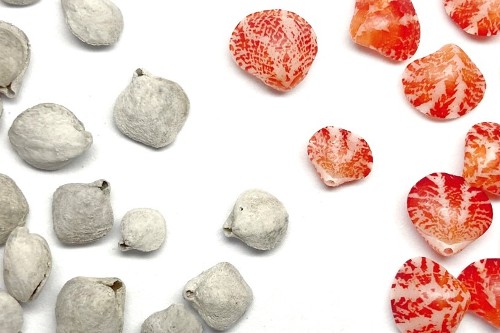Brachiopods were evolving in new directions, but this did not translate into evolutionary success in terms of species numbers, researchers at the University of Bristol, the Open University and the China University of Geosciences have found.
The findings, published today in Nature Ecology & Evolution, shed light on several key principles of the evolution of modern biodiversity.
In today’s oceans, molluscs such as clams, oysters and snails are extremely diverse, with over 50,000 species, while brachiopods are rare compared to only 394 known species. But it wasn’t always like that. The team has found that brachiopods were developing new shell forms and ecological behaviors after the Permian mass extinction, which endangered their numbers.
“In the Paleozoic, from 540 to 250 million years ago, brachiopods ruled the seabed,” said Dr Zhen Guo of the China University of Geosciences, who led the study. “Brachiopods are sometimes called lampreys, and they usually sit on the bottom of the sea, filtering tiny food particles from the seawater. Most of them are quite small – you could hold twenty of them in your hands; but others were huge and thick-shelled and long-lived, their shells ranged from circular to widely spaced, and they either had smooth shells or bore deep ridges and troughs.
“Brachiopods were hit very hard by the Permian mass extinction 252 million years ago,” said Professor Michael Benton of the School of Earth Sciences at the University of Bristol, a collaborator. “The group could have gone completely extinct, and indeed from that point on, the molluscs just became more and more successful. For a long time, it was thought that brachiopods remained rare because the survivors were stuck in only a few ways of life .”
Dr Tom Stubbs of the Open University added: “In fact, post-extinction brachiopods were innovating and trying out new ways of life. One group, the terebratulids, were diversifying their body forms and ecological functions from the late Permian to the present day .day, but their diversity did not increase”.
“This was quite unexpected,” said Professor Zhong-Qiang Chen of the China University of Geosciences. “Brachiopods were far from failures after the Permian extinction. They were evolving in new directions and exploring new ways of life, just like molluscs at the same time. But this did not translate into evolutionary success in terms of species numbers despite the explosions due to their evolution in form and function, they could not spread widely, and the exact reason remains unclear.
The new study is based on the analysis of a database of more than 1,000 genera of brachiopods from the last 250 million years. For each genus, the analysts recorded dozens of measurements of the shells’ overall shape, external sculpture and internal anatomy. These characteristics were analyzed together to provide measures of overall shape diversity for each major brachiopod group at each point in time. This measure of ‘form diversity’, commonly called disparity, can be compared from point to point in time to give a measure of form innovation and can be compared to counts of the number of species or genera over the same time spans . .
“Our study took a lot of effort,” Zhen Guo concluded. “But it is important to understand modern biodiversity in terms of the processes behind it.
“If we just look at modern brachiopods, we don’t understand their rich past history and how evolutionary innovative they have been. But our discovery that disparity and diversity are disconnected in brachiopod history is new and unexpected. Brachiopods were quite inventive in developing new shell shapes, but it didn’t translate into many new species.”
Letters:
‘Morphological innovation did not drive diversification in Mesozoic-Cenozoic brachiopods’ by Zhen Guo, Michael J. Benton, Thomas L. Stubbs and Zhong-Qiang Chen in Nature Ecology & Evolution doi: 10.1038/s41559-024-0249
